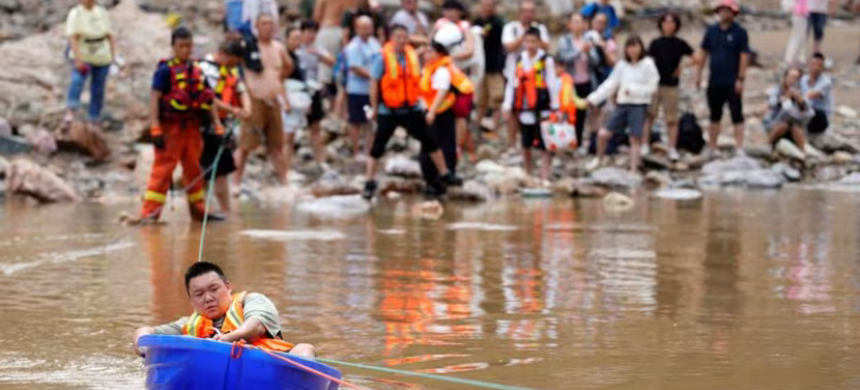At least 30 people have died in Beijing after a week of torrential rainfall dumped an entire year’s worth of precipitation on the region, triggering floods that displaced over 80,000 residents, damaged infrastructure, and left more than 130 villages without power or communication.
The storms peaked on Monday night, overwhelming disaster response systems. Flights and train services were heavily disrupted, and experts referred to Beijing as a rain “trap” due to its geographical layout. Most casualties occurred in mountainous areas, particularly Miyun district, where 28 deaths were reported, and two more in Yanqing.
Locals described the flooding as sudden and devastating. Zhai, a shop owner in Miyun, said water rose rapidly, submerging her store up to 1.5 meters and ruining her inventory. Nearby, a restaurant owner, Liu, was in shock at the destruction, estimating losses over 100,000 yuan.
Rainfall totals were extreme—Miyun received up to 573.5 mm, nearly matching Beijing’s annual average of 600 mm, while Huairou recorded over 95 mm in one hour. Climate expert Xuebin Zhang noted the rainfall equaled up to 90% of yearly totals in just days, far beyond most infrastructure’s capacity.
Neighboring Hebei province and Tianjin were also hit hard. In Hebei, a landslide killed eight, with four still missing. Some Tianjin villages were entirely submerged. China’s Emergency Ministry called the relief effort “complex and severe.”
Social media was flooded with pleas for help. One Weibo user wrote, “The flood is still coming. There’s no power, no signal, and I can’t reach my family.”
Scientists say these record-breaking rain events in northern China are becoming more frequent and severe, possibly due to climate change. A similar disaster in 2023 had already killed 33 people in Beijing.
Read more: GB Floods: Homes Destroyed, Tourists Reported Missing











